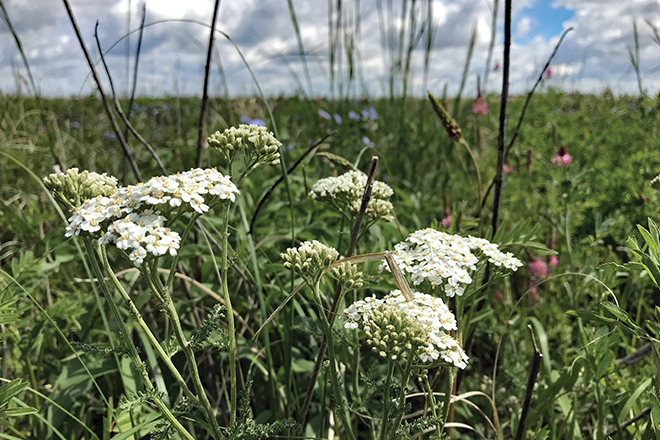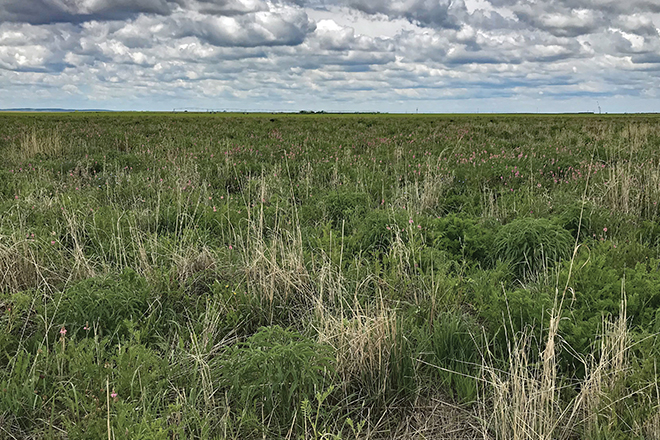A male prairie chicken displays on a patch of grassland.
PF on the Landscape in Colorado
Story by Ashley Huinker, Farm Bill Wildlife Biologist II - Colorado
As a Minnesota native, I grew up with trees and water. Prior to my recent move to eastern Colorado, I lived in Michigan, which is surrounded by four of the greatest lakes in the world. Perhaps you can imagine my thoughts the first time I set foot in the High Plains, looked around, and for miles saw no trees, no water — just rolling hills, grass and crop fields.
The prairie has a very lonely sort of beauty, and in time I began to learn about the incredible power of the grasslands. Pheasants, prairie chickens, lark buntings, western meadowlarks, western kingbirds, burrowing owls and sharp-tailed grouse are all among the bird species that depend on grasslands for their life cycle. Making a home on the prairie isn’t easy, but a healthy prairie has flowers, insects, places to hide and places to raise young.
Here in Colorado, I was quickly introduced to a conservation program that Pheasants Forever partners with Colorado Parks and Wildlife called Corners for Conservation. Crop fields here are irrigated using a massive sprinkler attached to a pivot in the middle. The resulting cropped area is circular, and the remaining corners provide excellent opportunities to put grassland habitat on the ground.
Not only do these corners provide habitat, but they also provide a valuable resource to people: public access. Everyone who enrolls in Corners for Conservation must also enroll for walk-in access, allowing other people the opportunity to have access to prime pheasant habitat.
 After a few years, grassland plantings make truly spectacular habitat.
After a few years, grassland plantings make truly spectacular habitat.
A corner is small. Many corners of center pivot crop fields are only 6 to 8 acres. Ideally, we want larger swaths of grassland habitat. But four corners of fields butted together might total 24 to 32 acres, and one project can make a neighboring landowner interested enough to want a grassland habitat project on their own property. One project can lead to another until we have a mosaic of grasslands on the landscape.
Corners are enrolled and planted with a high diversity grass mix. When I visited a new seeding last spring, I could see a Corners for Conservation project that was planted 3 years prior. Walking over to visit, I found a beautiful mix of grasses and forbs. All this excellent habitat would be open to the public come fall, because of a walk-in access agreement.
For growing wildlife on this landscape, nothing compares to diverse stands of tall grass and wildflowers. They invite insects, which in turn become food sources for birds, including pheasants, quail and grouse. Prairie grasses provide cover and protection from predators no matter what the season.
Active, functional grasslands are critical on the landscape. By building grasslands, we answer the call of the uplands, one corner at a time.
 Corners for Conservation grasslands create a mosaic of upland habitat patches in places that otherwise might not be very wildlife-friendly.
Corners for Conservation grasslands create a mosaic of upland habitat patches in places that otherwise might not be very wildlife-friendly.
This story originally appeared in the 2022 Spring Issue of the Pheasants Forever Journal
. If you enjoyed it and would like to be the first to read more great upland content like this, become a Pheasants Forever member today!